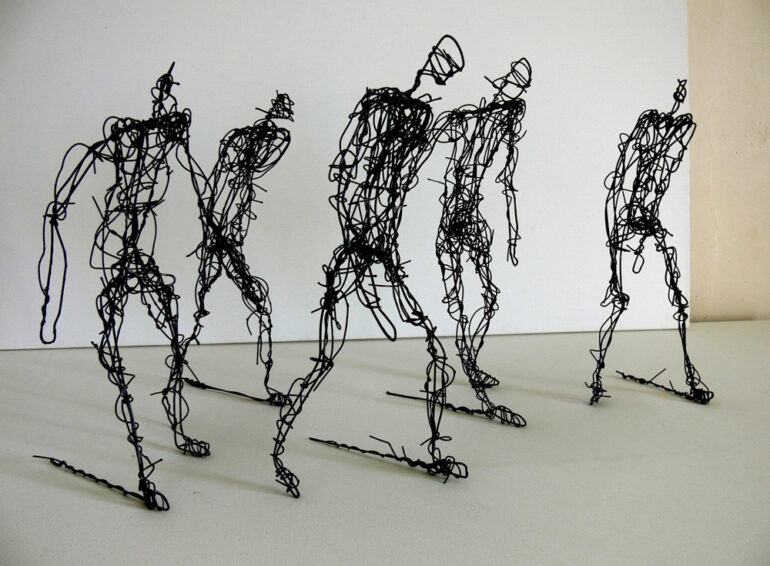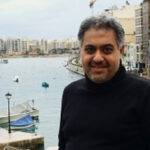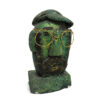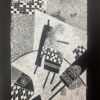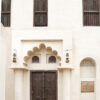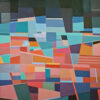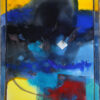The things that surround me, so close to me, are my raw materials
Hussain Sharif

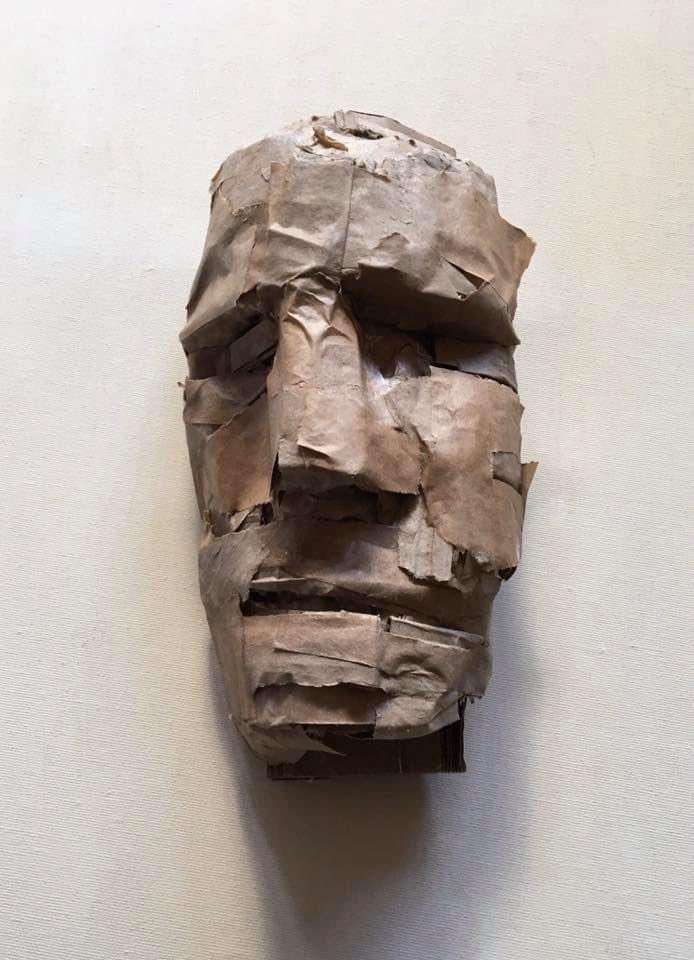
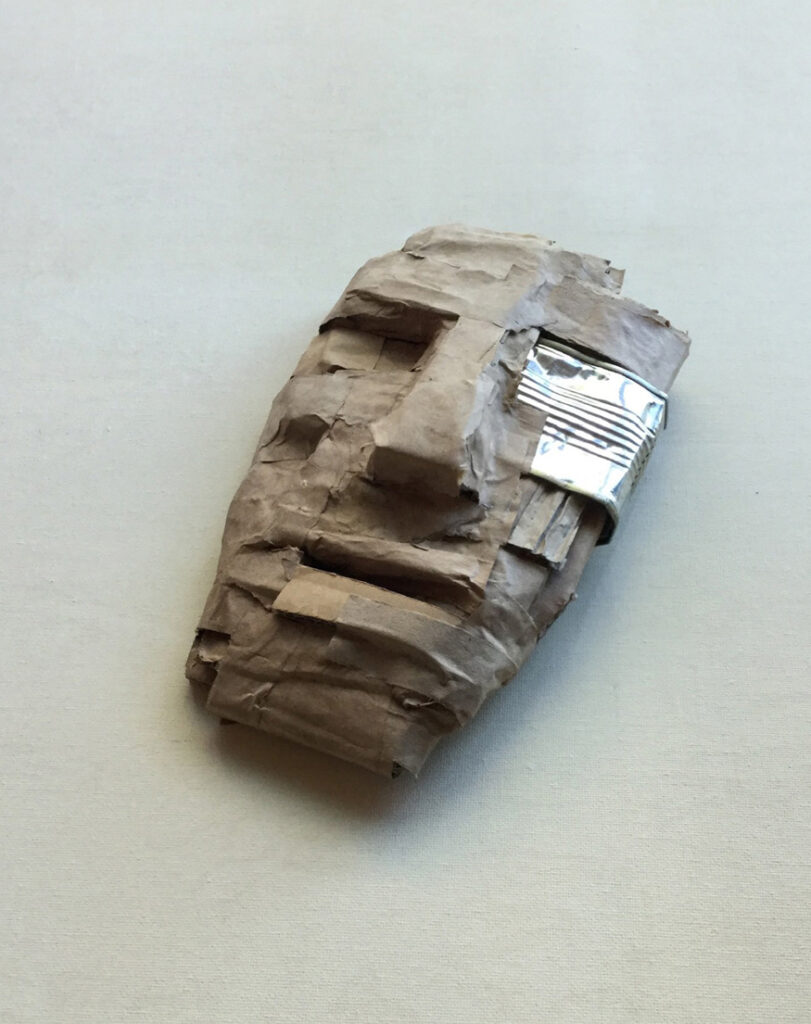
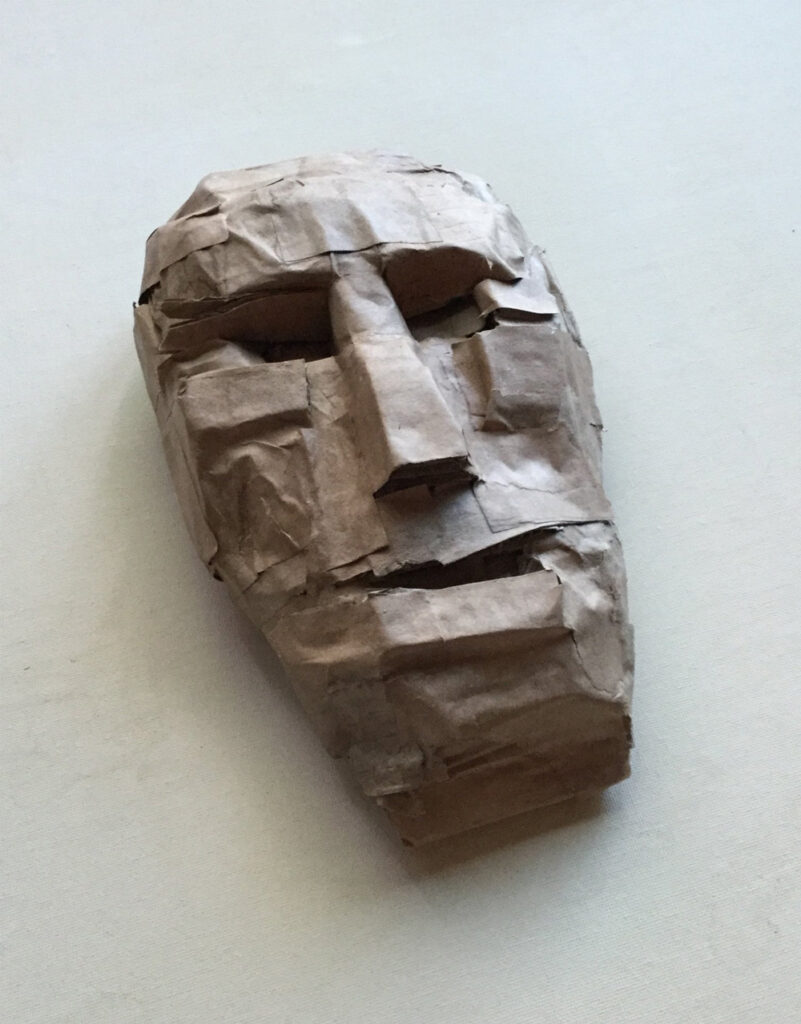
Hussain Sharif: “Faces”, mixed media+ paper, 2022.
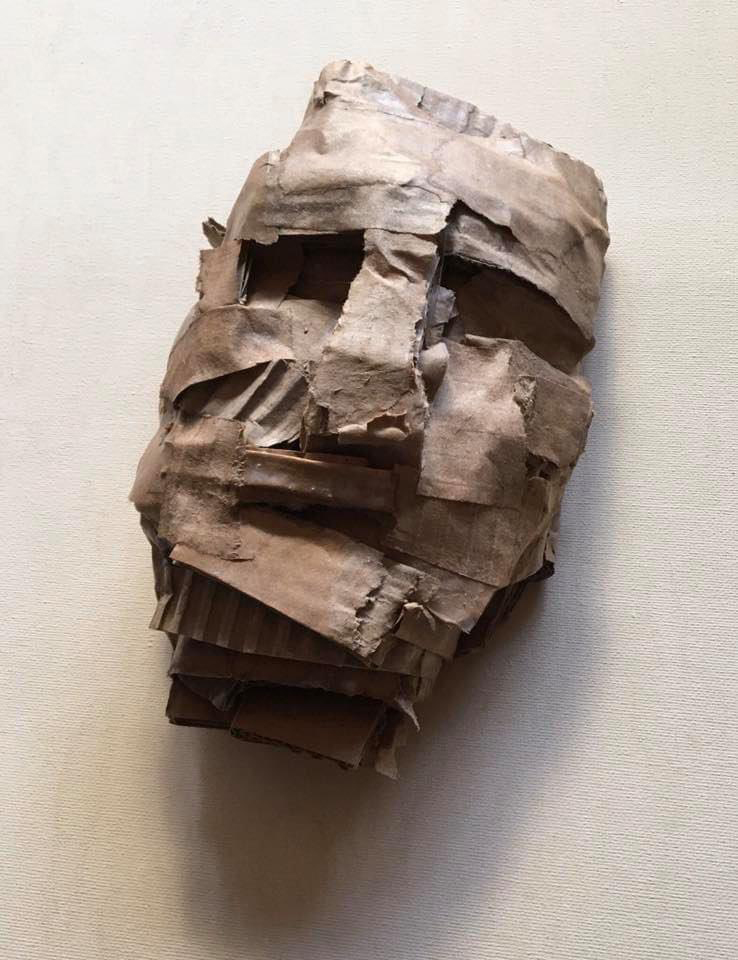

I have always perceived artist Hussain Sharif to be one of the strongest Emirati artists, most daring and creative even. His artistic production is known for its varied ideas and multidisciplinary practices, in an unanticipated way. Hussain Sharif was born in Dubai, in 1961. He studied theatre design at the Higher Institute of Dramatic Arts in Kuwait between 1983 and 1986. He participated in most of Emirates Fine Arts Society’s public exhibitions since 1980, in addition to participating in many public and private exhibitions within and outside the UAE, he also held many solo exhibitions. He was known for his abstractionist paintings and collage art, in addition to caricature drawings. In all of his artworks; paintings, sculptures, and installment art, one prominent feature of Artist Hussain Sharif is clearly seen, which is the unforeseen daring approach to dealing with materials, thus resulting in complete control over the course of the artwork. It is no wonder that he won awards in the different forms of visual arts, as his strong and diverse style qualified him to win the first prize at Sharjah International Biennial in 1997. Then in the next year in 1998, he won the first prize at the portrait exhibition held by Emirates Fine Arts Society. Numerous figures and cultural entities collected his artworks, among these are Sharjah Art Museum and Sittard Art Center in the Netherlands. Numerous articles and texts were written about artist Hussain Sharif’s artworks, most of them about his paintings and installment art pieces, but in this painting, I’d like to focus on his sculptural artworks, which are produced in sets, which are interesting with their satire feature which in a way mock many things, among which is traditional sculpture itself. The thing that could be seen in the way Artist Hussain shifts the configuration and production of the artwork’s classic and systematic traditions into the daily, the usual, and the common, more and more aiming for the sculpture to reveal the reality, if it cannot reveal the truth. The following is a brief review of those sculptural sets.
In the middle of the 90s, Hussain Sharif produced his sculptural artwork (Faces), which was a set of empty used cans collected by the artist, then forged and pierced, some pieces were cut and shaped using sharp tools mostly in order to give those faces their eyes, noses, and mouths. He also gave them the configurations that made them appear rigid and mysterious, yet articulating with so much to say, as every cavity and every curve has a signification. This artwork was displayed at Sharjah Art Museum in 1998, with a total volume and area of 15 × 200 × 200. What’s interesting is that this artwork was displayed right on the exhibition floor directly. A viewer would think that the individuality of each one of these faces might be lost in terms of expression and signification amidst the overall picture of the displayed set, meaning that the individual piece would lose its own effect in order to share that effect with the other pieces, however, if we were to look at every face on its own, we will find that it has its own unique effect, apart from the effect of the collective group. This means that the “Faces” of Hussain Sharif has simultaneously two types of effect, one collective effect, and an individual one. Hassan Sharif, the Late Emirati Artist, stated commenting on his brother’s artwork: “The subject of an artwork is no longer scenes of the city, or the faces of its residents, instead, the essence and the baggage of an artwork now lies within the scattered objects around the city, those could be the remnants and the traces of its residents, which are now forgotten. Objects such as packs, containers, and paper provide new energy, therefore, Hussain Sharif makes them unforgettable, and creates new existence for them, once again, in the memory of the viewer, thus creating some kind of unity between the artwork and the viewer.(1)
Here, it is also important to read what artist Hussain Sharif wrote himself about this artwork, as he says in some paragraphs he sent me: “In 1998, I have executed this artwork to participate in Portrait exhibition, organized by Emirates Fine Arts Society. I was bust at the time with producing artworks that combines traditional painting with sculpture. I have produced several artworks before that one that could be classified as assemblages, using raw materials from the surrounding environment. I have used here food containers and cans as an initial and essential raw material, and they are widely available, most people use them, and they’re also closely related to their daily lives. These cans and containers represent the product, or an essential thing, before consuming what they contain and then disposing of them. Here, I wanted to project a quality of durability on them by utilizing them as an element in producing an art piece, where their importance lasts for some time. It seemed like a new idea, easy to execute, and contains the shaping element due to the easiness and compliance of the material. The artwork also corresponds to my questions and experience in art, and it could be produced and displayed in huge numbers, which adds the element of confirmation through repetition. I have tried to give relatively different features, in addition to the variation level needed to convey visual aesthetics, as in leaving some of them to rust. It also comes – just like the rest of my artworks – carrying an aspect of consumerism behaviors and attitudes, in addition to a theatric theme when displayed. I completed the first part of the artwork in 1998, and displayed it at Cairo 7th Biennale in 1998. It was also displayed in Aachen museum, Germany in 2003. I have also displayed it in several exhibitions within the country. The second part, however, was made in 2017, and I have displayed it in one of the public exhibitions in Manarat Al Saadiyat, Abu Dhabi, and Art Dubai 2021.
Recently, Hussain Sharif produced a new artwork of Faces, but using paper this time. The new set contained around 40 faces, and unlike the metal Faces, which were produced by cutting, piercing, and removing, we see the Paper Faces produced by adding and assembling, i.e. by adding rolls of cardboard and regular paper, also sometimes by adding pieces of fabric or textile, or by adding metal coins in others. This overall practice, of adding and removing while producing those two sets, reminds me of a saying by past sculptors “He who knows how to add to a sculpture, knows how to remove”. I believe that Hussain Sharif mastered the production of those two sets, as each one of them has its own independent expressions. Those faces look at us, as viewers, the same way we look at them. They might even perceive our faces to be rigid, the same way we see them as rigid. Yet we might see ourselves, our expression, and perhaps our reflections in them. They might even remind us of some faces that we knew, or passed by in some city, or saw at a movie, thus driving us to leave our gazes on those paper and metal faces, the same way Emirati poet Ibrahim Al Malla left his gazes down the well.
In 2002, Artist Hussain Sharif participated in an exhibition held in Achen, Germany, with one of his most famous sculptures called “Strike”. The sculptural artwork is a group of figures that seem to be angry, rebellious, and advancing toward something. Artist Hussain created this artwork via tough bending of metal wires thus creating human shapes laid directly on the ground, without any bases, as the artwork itself negates the basic rules on which traditional sculpture is based. However, the artwork itself was displayed at a base in one of the exhibitions in the UAE, and I’m not sure if Hussain Sharif was the one to display it on a base or was it the exhibition organizers’ decision because I know that the artist himself deliberately wanted to display it on the floor in an attempt to break the chains and contexts of traditional sculptures, anyway, the dimensions of the artwork were 400 × 300 × 50. Perhaps what I have said about the previously mentioned artwork “Faces” about the effect of each individual element on its own apart from the collective effect of the group as a whole does not apply here. This is because if you were to look at each individual figure of the Strike set, you’d find it less effective than it is among the group, unlike the effect that you’d find when you look at the group as a whole. This is a tendency towards the impact of unity versus the impact of independence, this tendency goes along with the title of the artwork, clearly. Therefore, this group of figures addresses the surrounding display space, affecting it as a whole, not by each individual figure alone. They derive their power and effect from the group. Still, artist Hussain Sharif created other figures of the Strike group, which differ from the main group in shape, as we see some of the figures sitting with their arms around their legs, or with their hands on their knees, tired and exhausted, and perhaps depressed, which adds an exciting variety to the story he’s trying to narrate. What’s funny is that one of the figures was created in the shape of a person sitting, with one of his legs hanging, so that this could be displayed on a shelf in a library, on the table edge, even on a base, which is again clearly mocking the typical display of traditional sculptures.
Artist Hussain Sharif has another famous artwork, which is (Cars). The artwork contains a group of mini-size cars that Artist Hussain created out of some colored plastic containers, lids, and cylinders, and displayed at one of the public exhibitions of Emirates Fine Arts Society. They seemed amazing, glowing, and charming at that exhibition. However, Hussain Sharif created a new version of that artwork in 2021, which was closer to the spirit of typical daily pursuits relevant to the human being of today, the human being of the city. Thus, it is closer to the concept that the artist adapts. This new version seems to be made out of disposed materials, including metal cans, in some of which we could see rust, also from the consumed old colored plastic containers, which comes in line with what Hussain Sharif says about the concept of the daily and close. As he states, about the materials he uses in his artworks, in some texts he sent to me “what matters to me is for them to be easily available. I’m not concerned with the things that are far but in those that are so close through which we could arrive at the truth, and the present moment we live in is the container of the past and the future.” Hussain also states that such artworks “Gave the artist the right for his creations not to be necessarily superior, impressive, and so amazing; instead, the less mastery, fancy, and pretentious he is, the better, the purer, more important, and more impactful he can be.”
All in all, this artwork is indeed realistic, even if it wasn’t closely related to the local culture, but it is a modern interpretation of the small, old, and common car toys, which were made for children in the past. Yet, those cars were themselves the result of the people in the past dealing with the outcomes of modern life. That is because those cars were made out of artificial modern materials like tin plates and metal cans and so. Also, Hussain Sharif’s method of shaping those cars was not without temptation to the viewers, as they provoke them to play, when they stand in the display hall looking at them, and the cars stand in absolute silence on the floor, yet their silence is filled with memories of playing in the local societal collective unconscious mind. We can see that glaring in the attendants’ eyes when they stood next to that artwork by artist Hussain Sharif. Those cars are calling us to go back to being children again, and Paul Valéry says “When we’re no longer children, we become dead.”
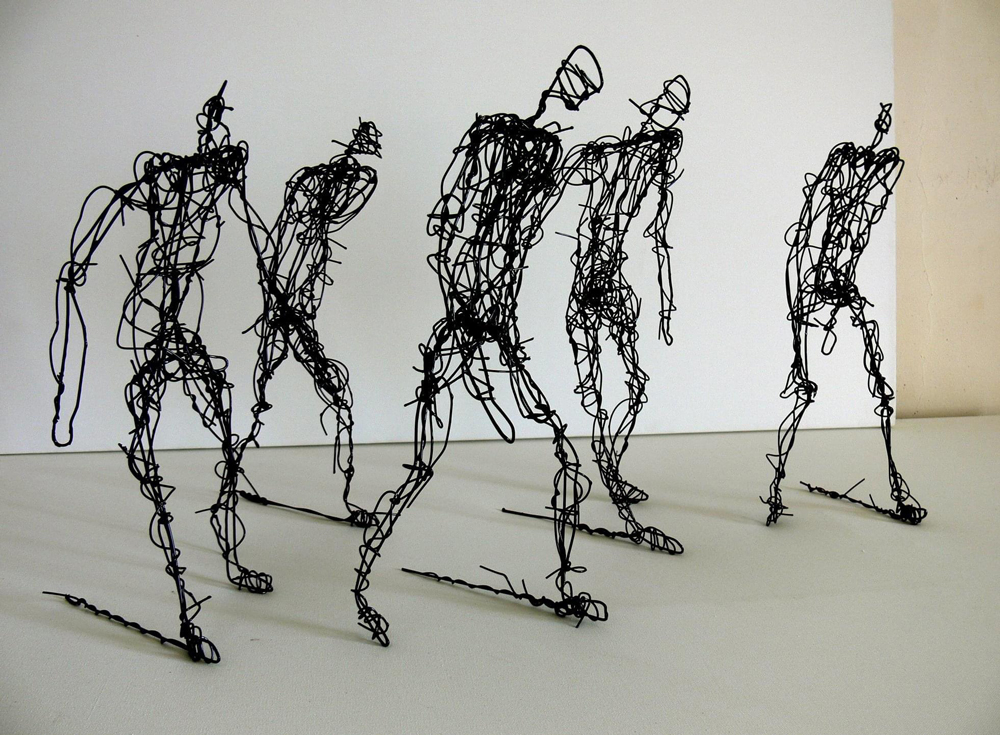

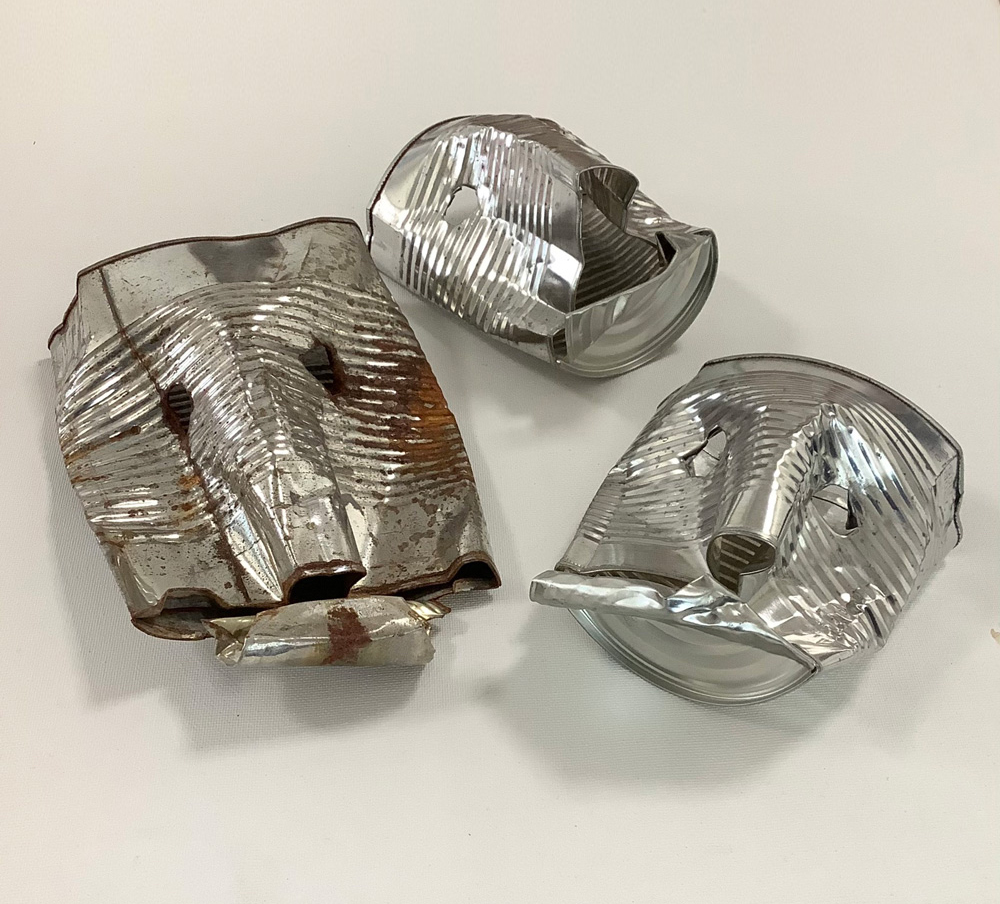
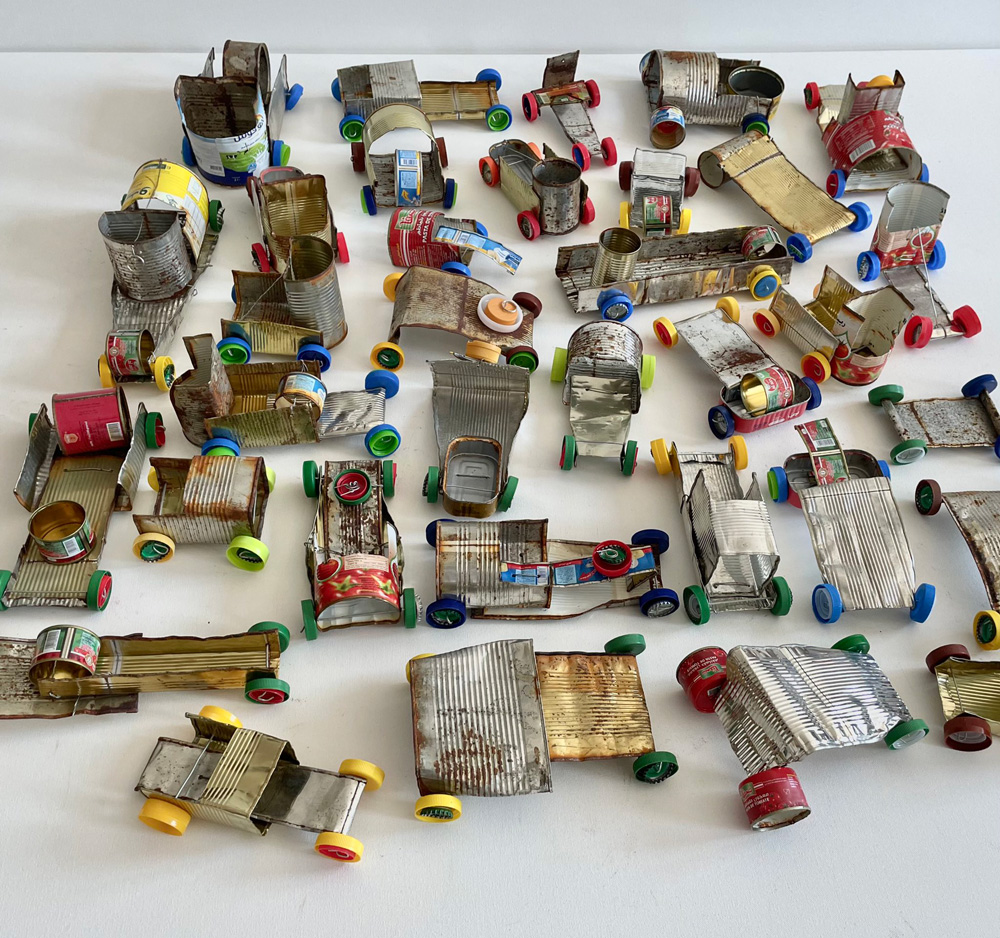
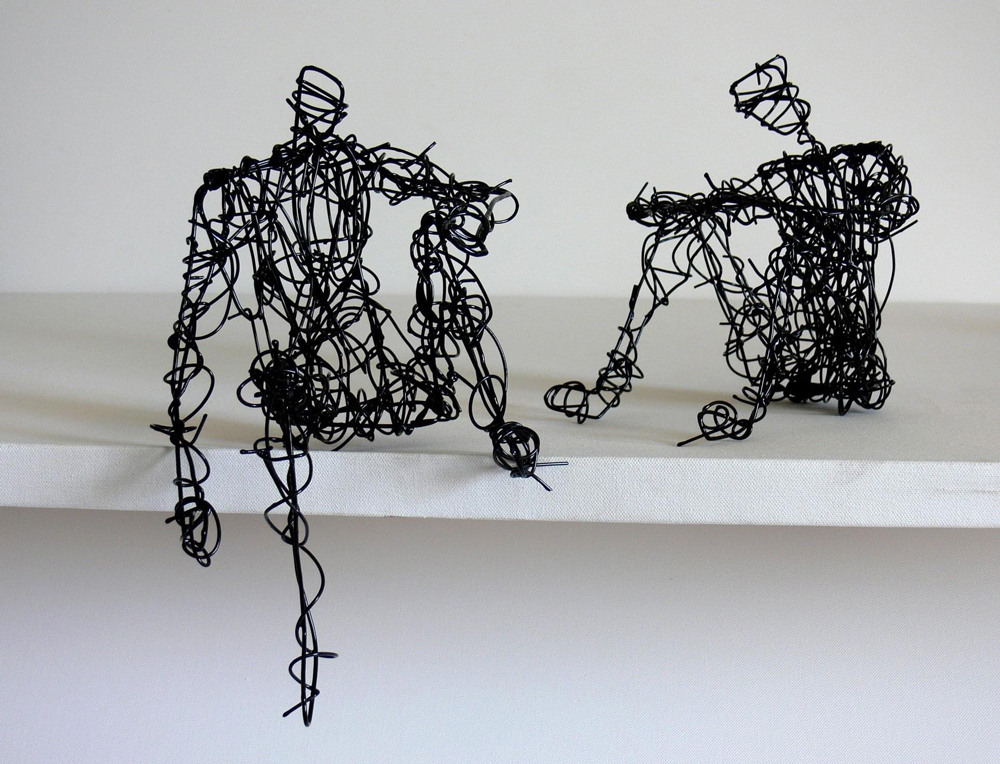
1. See “The Five” book, Hussain Sharif, Published by Sharjah Department of Culture, 2003, page 51.
A researcher for knowledge, visual artist, art critic, poet, musician, and director of the Artistic Heritage Department at Sharjah Institute for Heritage.

